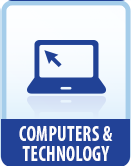|
This section contains 405 words (approx. 2 pages at 300 words per page) |
The point-of-sale (POS) system is a computerized retail transaction system, such as the one commonly seen at supermarket checkout counters. POS is also sometimes called EPOS for "electronic point-of-sale" in order to emphasize the computerized character of the current point-of-sale system. This system may use personal computers (PCs) or other specialized terminals that are combined with electronic cash registers, bar code readers, optical scanners, magnetic strip readers, among others, for accurately and instantly recording transactions at the time and place of the sale, hence the term "point-of-sale."
A POS system may be connected to an intranet (a private network within a company or organization) via a centralized computer for such activities as inventory updating and credit checking, or it may be a stand-alone machine that stores transactions until they can be delivered or transmitted to the main computer for processing. Some of the point-of-sale operations performed by the POS system are reading product tags, updating inventory, and checking customer credit. It often also includes such retail activities as merchandising techniques and aids, advertising displays, and the methods used to enable transactions. The total system generally includes the hardware and software that runs both the front counter and the back office operation of the business.
The following are important advantages of the POS system:
- 1. Fully tested pre-installed hardware and software configurations,
- 2. same vendor/representative support for all system aspects such as training and technical maintenance and service,
- 3. more reliable than other systems,
- 4. few software conflicts because all terminals support the fully integrated POS software,
- 5. restricted access to the operating system so unauthorized modifications cannot be performed,
- 6. software accessible "keycode" to allow customized coding of the keyboard (with "keylock" to prevent unauthorized changes),
- 7. labeled function keyboard to increase throughput and reduce training (e.g., to input employee discounts),
- 8. lockable journal tape and diskette drive in order to prevent removal of sensitive information,
- 9. control totals kept in protected area of main memory (normally random-access memory), and
- 10. hardware and software error detection.
A POS system provides control over transactions, with access to a large amount of historic data for comparisons over periods of years, months, and weeks with regards to such thing as profitability on different retail lines, stock comparisons, and other important financial and marketing indicators. The system can also track inventory, provide efficient computer stock control and reordering, and automatically create order lists as needed (even adjusting quantities for seasonal demand).
|
This section contains 405 words (approx. 2 pages at 300 words per page) |


